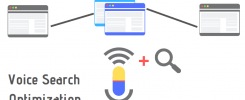The Open Graph Protocol (OGP) is a set of metadata tags that website developers can add to their web pages. These tags are designed to provide structured information about the content of a webpage, particularly when it is shared on social media platforms like Facebook, Twitter, LinkedIn, and more. OGP tags help ensure that when a URL is shared, the social media platform displays the content in a way that is visually appealing and informative. Here is a detailed explanation of the Open Graph Protocol:
1. What is the Open Graph Protocol (OGP)?
The Open Graph Protocol is a protocol developed by Facebook in 2010 to standardize the way web pages are presented when shared on social media. It allows website developers to define specific metadata for their web pages, which social media platforms can then use to generate rich, engaging previews when users share links. OGP tags are placed in the HTML head section of a web page.
2. OGP Tags:
There are several key OGP tags that web developers can use to provide information about a webpage:
og:title: This tag specifies the title of the content being shared. It should be concise and descriptive.og:description: This tag provides a brief description of the content, allowing users to understand the topic or purpose of the page.og:image: This tag points to an image that represents the content. It’s often a thumbnail or featured image that appears with the link when shared.og:url: This tag specifies the URL of the web page being shared. It should be the canonical URL of the page.og:type: This tag indicates the type of content, such as an article, blog post, product, video, or website.og:locale: This tag defines the language and region for the content, which helps social media platforms display it to the appropriate audience.
3. Benefits of Using OGP:
- Enhanced Sharing: OGP tags ensure that when a URL is shared on social media, it appears as an attractive and informative snippet, encouraging more clicks and engagement.
- Consistent Branding: OGP tags allow you to control how your content is presented across different social media platforms, maintaining brand consistency.
- Improved SEO: Although OGP tags are primarily used for social media, they can indirectly benefit your website’s SEO by increasing click-through rates and social signals.
4. How to Implement OGP:
To implement the Open Graph Protocol on your website, you need to add the appropriate meta tags to the <head> section of your HTML code. Here’s an example of how to include some basic OGP tags:
<meta content="Your Page Title">
<meta content="A brief description of your content.">
<meta content="https://example.com/image.jpg">
<meta content="https://example.com/page-url">
<meta content="article">
<meta content="en_US">
These tags should be customized to match the specific content of the page you’re sharing.
5. Debugging and Testing:
After implementing OGP tags, it’s a good practice to use Facebook’s Open Graph Object Debugger or other similar tools to ensure that the metadata is correctly configured and displayed when shared on social media.
In summary, the Open Graph Protocol is a valuable tool for website developers and marketers to control how their content appears when shared on social media. By implementing OGP tags, you can enhance the visibility and engagement of your web pages across various social platforms, ultimately driving more traffic to your website.


